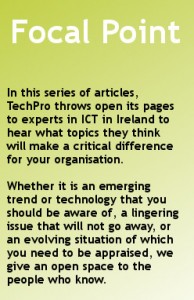Not many people realise that the now much hyped Internet of Things (IoT) is a term that was actually coined back in the early days of RFID. Our Wikipedia friends suggest it gathered momentum since 1999. There have been lots of smart development since then, notably in sensor technology, near field communication and a potentially huge range of smart devices. But in all the speculative media stuff about smart fridges and home control centres for all devices, now already here and gaining significant market traction, the fundamental element is ignored: identity. The entire foundation of the Internet of Things rests on the ability to identify every item. A unique identifier, coupled with an IP address, is at the core. Connecting ‘things’ and devices and whatever functionality we might add will all and always depend on that.
It is absolutely clear that there will be lots of clever things based on the IoT that will be, like the Internet itself, limited only by the imagination of developers and inventors. We can be sure because with giants like Cisco, Bosch, Microsoft, Rockwell, GE, Ericsson, Google, IBM, Oracle and chip manufacturers Intel and ARM in the fray the IoT game is certainly on in a really big way. In fact there is something of a move to re-name it before development goes too far: The Internet of Everything seems to be the replacement — Cisco uses it — although some of us might feel The Internet can just have its description extended. No matter what is connected and what data exchanged, that is the infrastructure and we are going to add but not essentially change.
At a practical level, we see RFID and passive and active tags as a fundamental component with sensors of multiple kinds as the next step up, whether always-on or polled on demand like tags. Think of the valuable ways in which RFID is being used every day in manufacturing, distribution and supply chains to track goods in motion or in stock. In healthcare, applications range from asset tracking (high value portable equipment like X-rays high on the list) to patent tracking to access control.
Next generation smart manufacturing is close to the top of our list. One of its core elements is interoperability in all of its forms, allowing elements of the manufacturing process to communicate for maximum efficiency in a fully integrated plan. That would include machines and tools, conveyor systems, assembly stations, trucks and trolleys and robots. The more we apply connective technology (probably local but Internet-capable at plant level) the more smart developments are going to develop in response to specific opportunities.
Ubiquitous RFID and wireless networks and handheld gadgets have already transformed the industrial workplace. We have automated lights-out plants based on robotic manufacturing and processing. Adding IP connectivity is actually not a huge step in concept. Developing the next generation of manufacturing design and process, Industry 4.0 as it is being called, is a huge opportunity. It is also, we can suggest, particularly appropriate for Ireland and our strong base in electronics and medical devices, pharmachemical and food processing, nanotechnology and niche software development.
Robert Jones is managing director of Vision ID









Subscribers 0
Fans 0
Followers 0
Followers